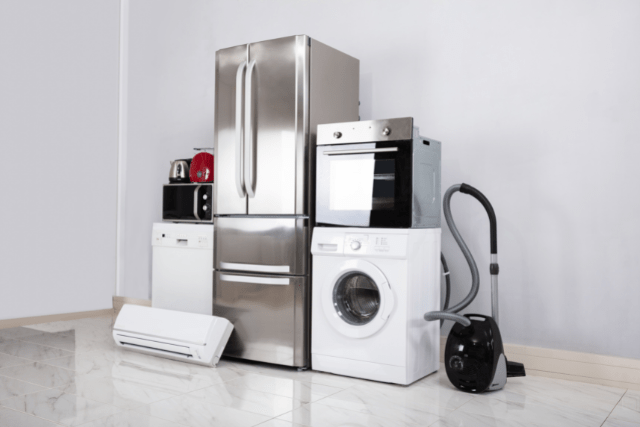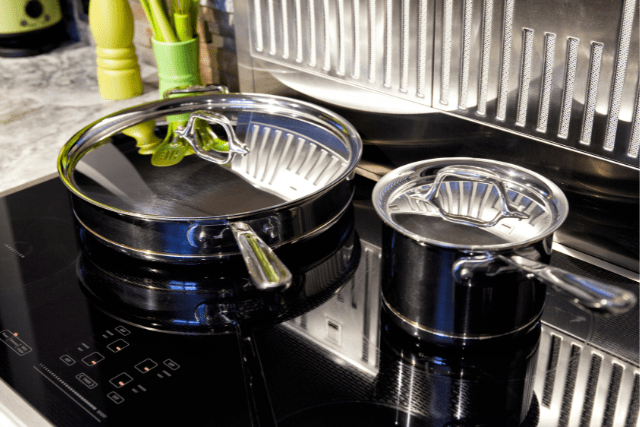In today’s world, it is important to be conscious of the environmental impact of our actions and choices. One area where we can make a significant difference is in the appliances we use in our kitchens. These appliances use energy and resources from refrigerators to ovens to dishwashers, and their manufacturing and disposal can also negatively impact the environment.
This article will explore the environmental impact of kitchen appliances and discuss ways to reduce them. By making informed choices and taking simple steps to conserve energy and resources, we can help to protect the planet and preserve it for future generations.
The Environmental Impact of Kitchen Appliances
The kitchen is a hub of activity in most homes, and it is also a place where we use a lot of energy and resources. From running appliances to disposing of waste, our kitchens can have a significant impact on the environment. In this chapter, we will explore how our kitchen appliances contribute to environmental issues.
Energy Consumption
The appliances in our kitchen, such as refrigerators, stoves, and dishwashers, all use electricity. The more energy we use, the more greenhouse gases are released into the atmosphere, contributing to climate change. In addition, the production of electricity often involves burning fossil fuels, which releases even more greenhouse gases.
Water Usage
Our kitchen appliances also use water, whether it is for washing dishes or cooking food. Water is a precious resource, and it is important to conserve it whenever possible. In addition, the treatment of water to make it safe for consumption requires energy, which further contributes to greenhouse gas emissions.
Waste Production
The food industry, which includes food production, processing, and transportation, is a major contributor to environmental issues. In the kitchen, we generate waste through the disposal of food scraps, packaging, and appliances that are no longer usable. This waste ends up in landfills, where it decomposes and releases methane, a potent greenhouse gas.
Overall, our kitchen appliances and practices can have a significant impact on the environment. However, there are steps we can take to reduce this impact and make our kitchens more sustainable.

Choosing Energy-Efficient Appliances
One of the most effective ways to reduce the environmental impact of kitchen appliances is to choose energy-efficient models. Energy-efficient appliances use less energy to perform the same functions as traditional models, which can help to reduce greenhouse gas emissions and save you money on your energy bills.
When shopping for kitchen appliances, look for the Energy Star label. This label indicates that the appliance meets strict energy efficiency standards by the U.S. Environmental Protection Agency (EPA).
In addition to the Energy Star label, there are other ways to determine the energy efficiency of an appliance. Look for appliances with high energy efficiency ratings, measured on a scale of 1 to 10, with ten being the most efficient. You can also compare the energy use of different appliances by looking at their energy guides, which list the appliance’s energy consumption in kilowatt-hours (kWh).

Reducing Water Use
Water is a valuable resource, and it is important to conserve it whenever possible. There are several ways to reduce water use in the kitchen, including:
Installing low-flow faucets
Low-flow faucets are designed to use less water than traditional faucets while still providing good water flow and pressure. They typically have a flow rate of 1.5 gallons per minute (GPM) or less than the standard flow rate of 2.2 GPM for most traditional faucets.
Low-flow faucets can help households and businesses save water and reduce water bills. They are also more environmentally friendly because they use less water, reducing the water treatment and distribution demand. In addition, low-flow faucets can help reduce the impact of drought by conserving water resources.
There are several low-flow faucets, including aerator faucets, which mix air with water to reduce the flow rate, and flow restrictor faucets, which use a small valve to limit water flow. Low-flow faucets are available for both kitchen and bathroom sinks and can be installed by a plumber or as a DIY project.
Using a dishwasher
Using a dishwasher can be an environmentally friendly way to clean your dishes, as long as it is used correctly. Dishwashers use less water and energy than washing dishes by hand, as long as they are full. In addition, newer dishwashers are often more energy-efficient than older models, so upgrading to a newer model can further reduce your environmental impact.

To make the most of your dishwasher, try to fill it each time you run it, and only use it when you have a full load. Avoid pre-rinsing dishes, as this uses extra water and can reduce the dishwasher’s efficiency. Instead, scrape off any excess food and let the dishwasher do the rest.
When shopping for a new dishwasher, look for Energy Star certified models, which are tested and certified to be more energy-efficient than standard models. You can also consider purchasing a dishwasher with a smart thermostat, which adjusts the water temperature based on the load, or a delay start feature, which allows you to schedule the dishwasher to run during off-peak energy hours.
Collecting and reusing water
One way to reduce water consumption in the kitchen is to collect and reuse water. There are several ways to do this:
Reuse cooking water: When you are boiling water for pasta, vegetables, or other foods, save the water after you are finished cooking. This water can be used to water plants or to rinse dishes.
Recycle greywater: A greywater system is a way to recycle water from the kitchen and bathroom for use in the garden. This can be as simple as collecting water from the sink or shower in a bucket and using it to water plants. Just make sure to avoid using greywater on edible plants or plants that come into contact with food.
Recycling and Disposing of Appliances Responsibly
When it is time to replace your kitchen appliances, it is important to dispose of them responsibly. Many appliances contain materials that can be recycled, such as metals and plastics, and recycling them can help reduce their product’s environmental impact.
In addition to recycling, you can also consider donating or selling your old appliances to someone who can use them. This can extend the appliance’s life and prevent it from ending in landfills.
If you do need to dispose of your old appliances, make sure to do so properly. Many cities and towns have programs to dispose of appliances properly, and some appliance stores may also offer disposal services.
Simple Steps to Reduce the Environmental Impact of Kitchen Appliances
In addition to choosing energy-efficient appliances and recycling and disposing of them responsibly, there are several simple steps you can take to reduce the environmental impact of your kitchen appliances:
- Unplug appliances when not in use: Many appliances use energy even when turned off, so unplugging them can help reduce energy waste.
- Use the right size appliance for the job: Using a small appliance for a small task can use less energy than a larger appliance, so choose the right size for the job.
- Keep appliances clean and well-maintained: Cleaning and maintaining your appliances can help them to run more efficiently and use less energy.
Use the energy-saving setting: Many appliances have an energy-saving setting that can help to reduce energy use.
Conclusion
By making informed choices and taking simple steps to conserve energy and resources, we can significantly reduce the environmental impact of kitchen appliances. By choosing energy-efficient appliances, reducing water use, and disposing of appliances responsibly, we can help to protect the planet and preserve it for future generations.







